At first glance, selecting a seafood storage tray may seem simple — but one wrong choice could jeopardize an entire shipment. From cracking during transport to contamination risks due to poor materials, many fisheries and seafood processors have learned this lesson the hard way.
In this article, SIAM Brothers Vietnam will highlight 5 essential criteria to help you choose a high-quality seafood storage tray — one that is durable, safe, and cost-effective in the long run. Read on to avoid common mistakes and make a smart investment for your business.
1. Why Choosing the Right Seafood Storage Tray Matters
1.1. It Directly Affects Product Quality
- Low-quality trays are prone to cracking, absorbing moisture, or retaining fishy odors, which can negatively affect the freshness and hygiene of seafood.
- Inadequate storage conditions can accelerate spoilage, especially during long-distance transport or extended warehouse storage.
1.2. It Ensures Food Safety Compliance
- Cheap trays made from recycled plastics of unknown origin may leach harmful substances into fresh seafood.
- Choosing seafood storage trays made from virgin plastic that meets food safety standards helps protect both your customers and your brand reputation.
1.3. It Improves Efficiency in Transportation and Storage
- Trays with the wrong dimensions or poor stackability and drainage can disrupt workflows, reduce storage capacity, and lower productivity.
- A smart design helps optimize warehouse space, streamline sorting, and improve operational efficiency.
1.4. It Minimizes Damage and Replacement Costs
- High-quality seafood storage trays offer much longer service life than generic or substandard options.
- Investing once in the right product reduces ongoing expenses for repairs, replacements, and production delays.
- Whether you're a seafood processor, aquaculture farmer, or export business, choosing the right seafood storage tray is more than just an operational choice — it's a strategic move to protect your product value and brand image.
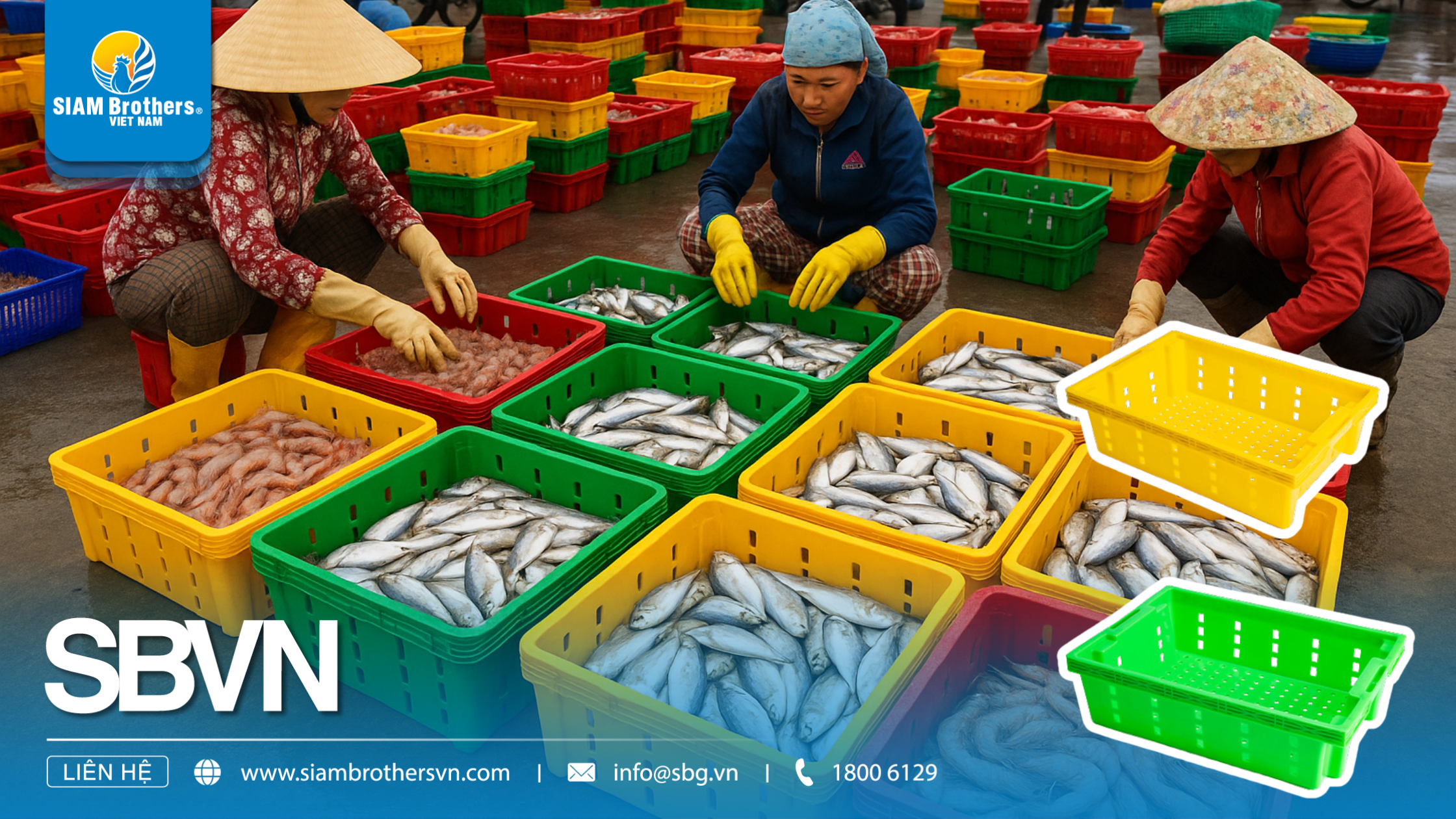
2. Criterion 1: Material Suitable for Seafood Industry Use
2.1. Virgin Plastic – The Safe and Sustainable Choice
- Opt for seafood storage trays made from virgin plastic such as PP, PE, or HDPE to ensure:
- No harmful additives or contaminants
- Safe for direct contact with fresh foods like meat, shrimp, and fish
- High resistance to chemicals and corrosion from seawater or detergents
2.2. Crack and Impact Resistance Under Cold Conditions
- Seafood is often preserved in low temperatures or with ice, so trays must be:
- Flexible and non-brittle when frozen
- Durable enough to withstand impact during handling or long-distance transport
2.3. Odor-Resistant and Waterproof
A good tray must:
- Resist absorbing fishy smells and prevent water seepage after prolonged use
- Have a smooth, non-porous surface that is easy to clean and discourages bacteria growth
2.4. Compliance with Food Safety and Export Standards
- If your business supplies seafood to export markets or supermarket chains, ensure your trays:
- Are made from traceable materials with proper certifications (FDA, ISO, etc.)
- Are manufactured under strict quality control protocols for food safety assurance
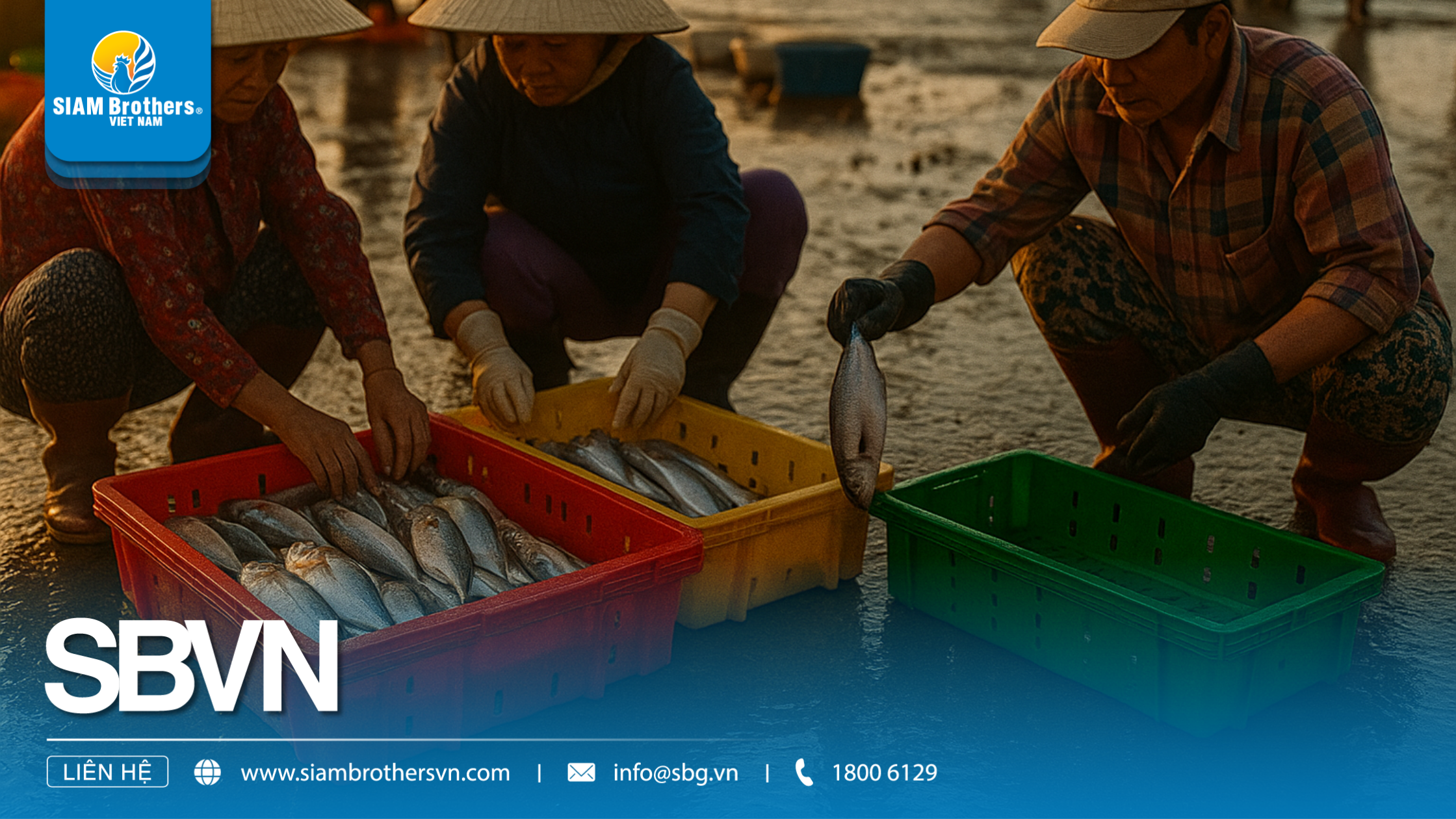
3. Criterion 2: Durability and Load-Bearing Capacity
3.1. High Load Capacity Without Warping
- A quality seafood storage tray must be structurally solid, capable of withstanding heavy loads without bending or deformation during stacking.
- Especially with frozen seafood, the additional weight can cause low-grade trays to crack during transport or loading.
3.2. Impact Resistance During Operation
- Frequent dragging, collisions, and rough handling at fishing ports, cold storage warehouses, or processing facilities are unavoidable.
- A high-quality tray made of thick, flexible plastic will resist cracking, even under extended and repeated use.
3.3. No Brittleness or Material Degradation in Harsh Conditions
- Prolonged exposure to sunlight, seawater, and low temperatures often causes plastic to become brittle and lose elasticity.
- Choose trays with UV resistance and tolerance to cold or humid environments to significantly extend product lifespan.
3.4. Reusability Over Multiple Cycles
- A durable tray should be reusable for hundreds of cycles without performance loss.
- This not only saves costs but also shows your business’s commitment to sustainable production and plastic waste reduction.
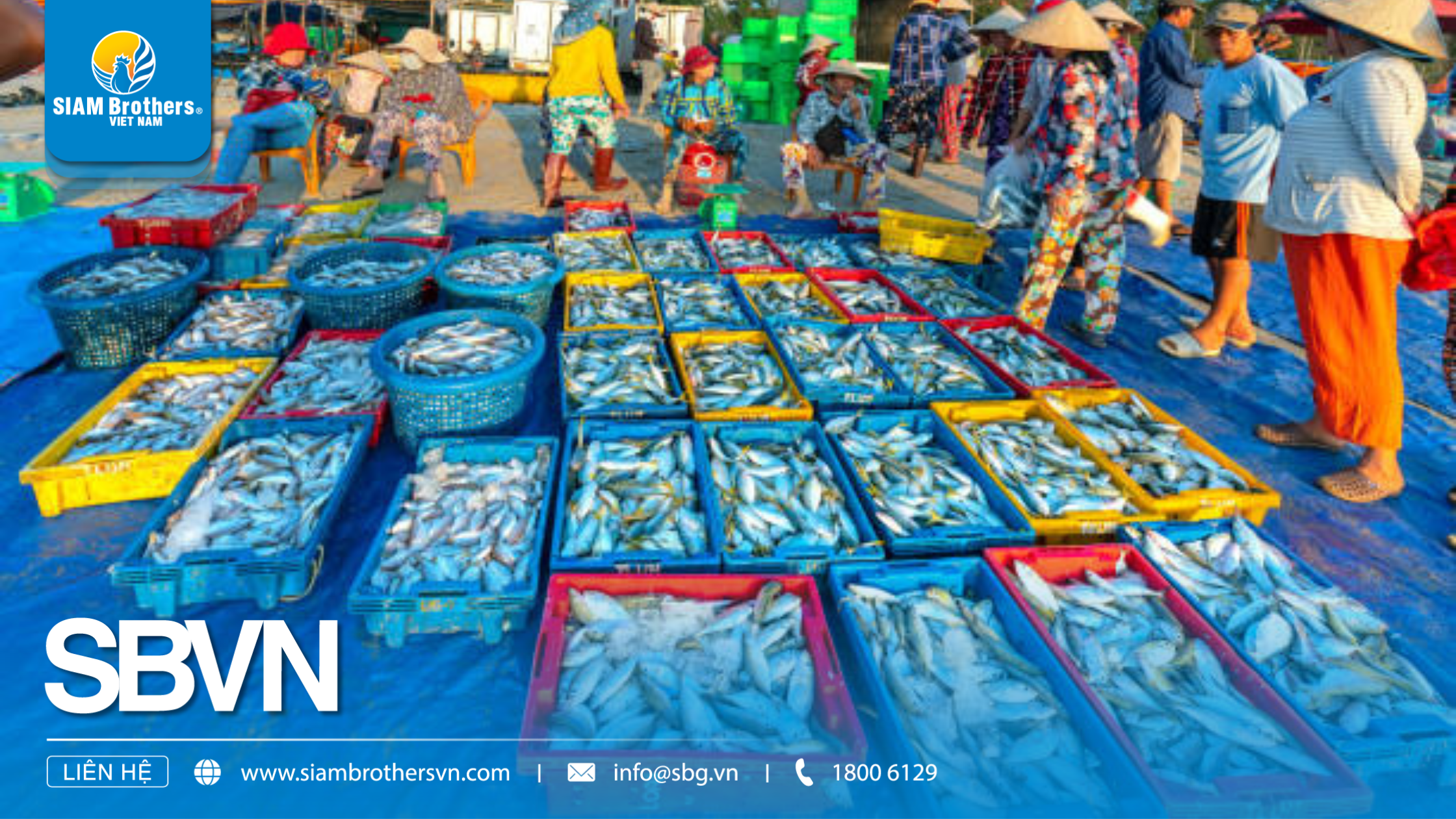
4. Criterion 3: Hygienic and Functional Design
4.1. Smooth Surface to Prevent Residue Buildup
- Trays should feature a smooth, non-stick surface to avoid fish slime or odor retention after use.
- This design ensures easy cleaning and helps prevent bacteria and mold growth.
4.2. Intelligent Drainage System
- Choose seafood storage trays with drain holes or meltwater channels to keep the product dry and fresh.
- This feature is ideal for live or pre-processed seafood that needs cold storage.
4.3. Stackable Design – Optimize Storage Space
- Trays should include anti-slip rims or interlocking grooves for stable stacking, minimizing space usage and preventing product damage from pressure.
- This is especially helpful during transportation or long-term storage.
4.4. No Sharp Edges – Safe Handling
- Edges and corners should be rounded to prevent user injury.
- A smooth design also reduces the risk of tearing fishing nets or damaging seafood during handling.
4.5. Tailored to Each Processing Stage
- Depending on whether the tray is used for sorting, cleaning, or exporting, it must have the right size and shape.
- Smart design helps save labor, time, and operational costs for your business.
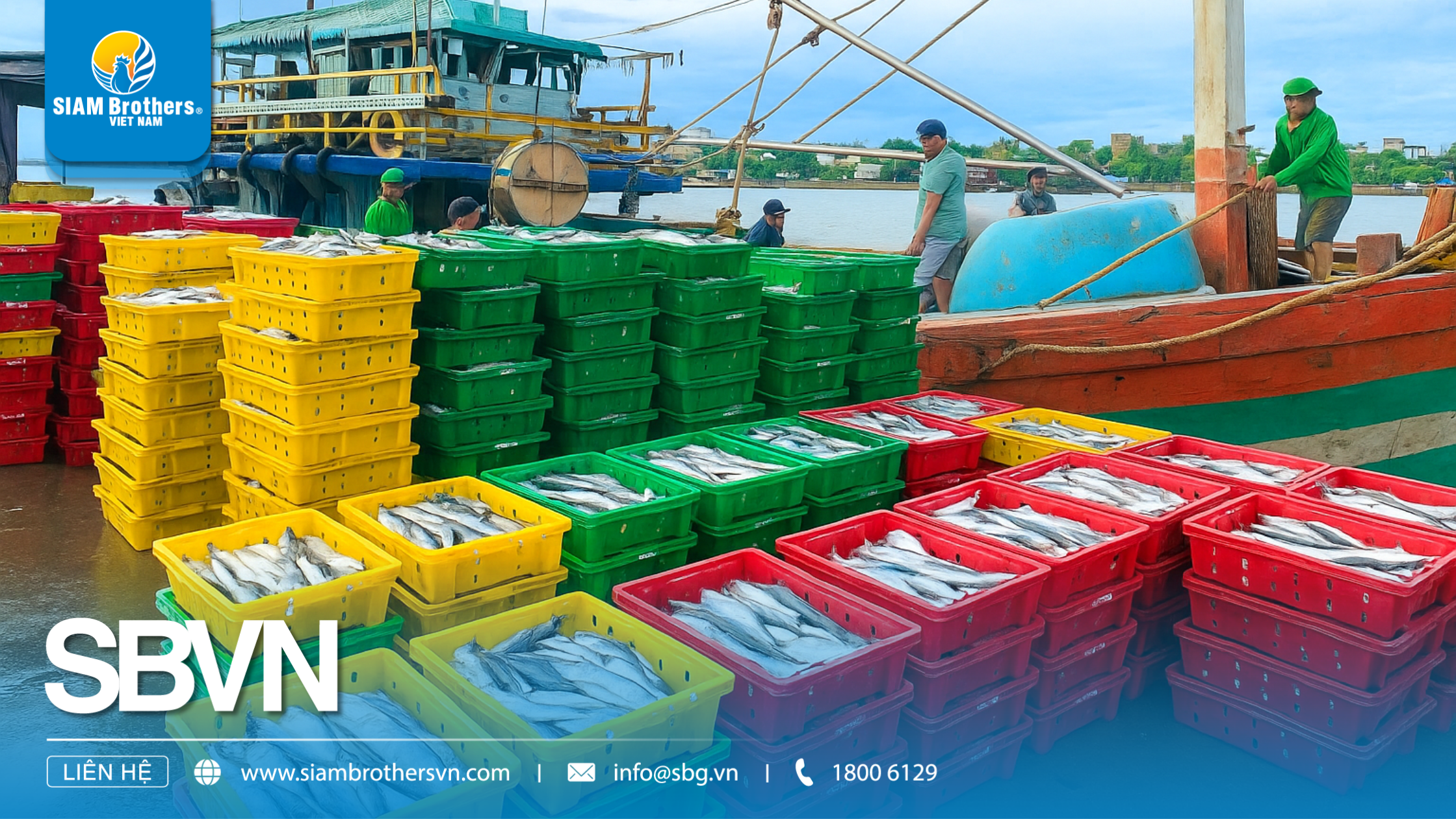
5. Criterion 4: Dimensions and Stackability
5.1. Proper Size for Each Application
- For sorting and preprocessing: choose medium-sized trays that are easy to handle.
- For bulk transportation: use larger trays to maximize capacity and reduce loading times.
- For cold storage or refrigerated trucks: select sizes that fully utilize available space.
5.2. Stable Stacking – Optimize Space
- Seafood trays should be designed with anti-slip rims or interlocking grooves to ensure stable stacking without tipping.
- This improves space efficiency and protects product integrity.
5.3. Retains Shape Under Heavy Stacking
- One often-overlooked factor is that trays must maintain their shape when stacked in layers.
- Choose trays with a rigid base and thick walls to avoid cracking or warping under pressure.
5.4. Easy to Stack and Unstack
- For fast-paced operations, trays should be easy to separate and restack without jamming or spilling the contents.
- This is a major advantage in high-intensity production environments.
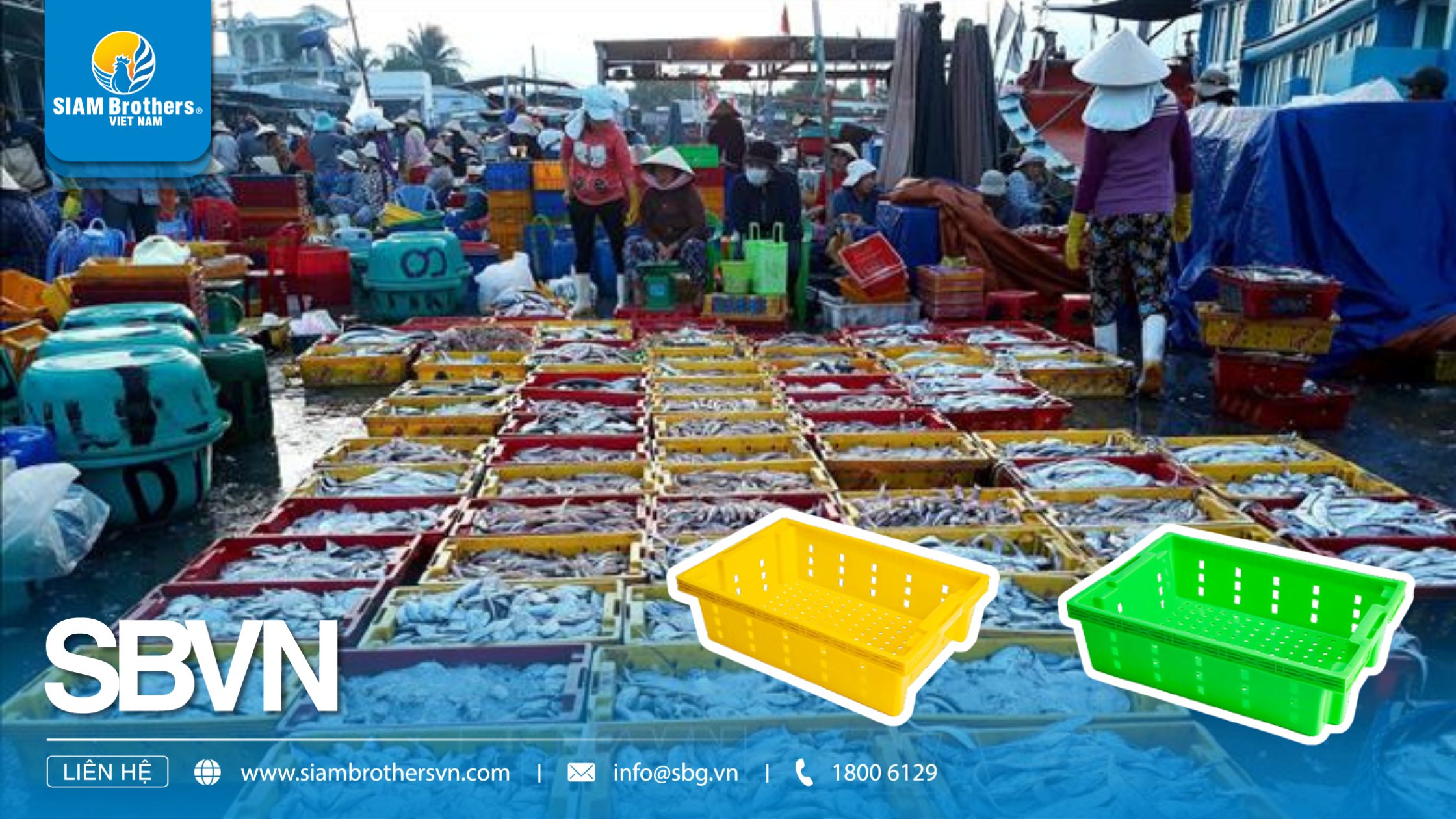
6. Criterion 5: Trusted Supplier and After-Sales Policy
6.1. Experience and Manufacturing Capabilities
- Choose suppliers with proven experience in the seafood industry who understand cold chain, hygiene, and transport standards.
- Prefer suppliers with in-house manufacturing to ensure product quality and availability.
6.2. Certified and Quality-Assured Products
- Trays should come with food safety certifications, be corrosion-resistant, and environmentally friendly.
- Avoid products with unknown origin or missing technical specifications.
6.3. Tailored Solutions, Not One-Size-Fits-All
- A professional supplier will recommend trays based on your specific processes: harvesting – preprocessing – storing – transporting.
- They won't pressure you into bulk purchases that exceed actual needs.
6.4. Transparent Warranty and Support
- Look for suppliers offering clear return and warranty policies in case of defects or discrepancies.
- Additional support services such as fast delivery or custom options are a big plus.
6.5. Positive Market Reputation and Client Feedback
- Check for reviews from industry peers or request free sample trays to test quality.
- Reputable suppliers usually serve large processors, cold storage facilities, or cooperatives — a sign of trustworthiness.
A seafood storage tray may look simple, but it directly affects product quality, operational efficiency, and storage costs.
To avoid unnecessary expenses, always evaluate trays based on five critical factors: certified materials, durability, hygienic design, stackability, and, most importantly, a reputable supplier with reliable after-sales support.
Let SIAM Brothers Vietnam be your trusted partner in selecting the right seafood storage tray to boost your production, storage, and logistics efficiency.
Contact us today for a free consultation and customized quote for your business needs!
Source: SIAM Brothers Vietnam
Contact us:
Address: 5th floor, VRG Building, 177 Hai Ba Trung Street., Vo Thi Sau Ward, District. 12, Ho Chi Minh City, Vietnam
Tel: (+84) 28 38 912 889
Hotline: 1800 6129
Facebook: www.facebook.com/siambrothersvn
Email: info@sbg.vn
YouTube: youtube.com/@siambrothersvietnam1728
X: x.com/sbvnjsc
OA Zalo: zalo.me/1402339229697925373
App SBVN ID:




